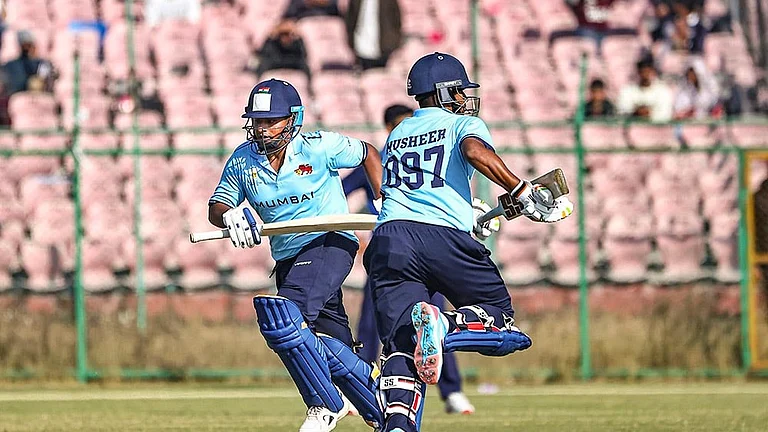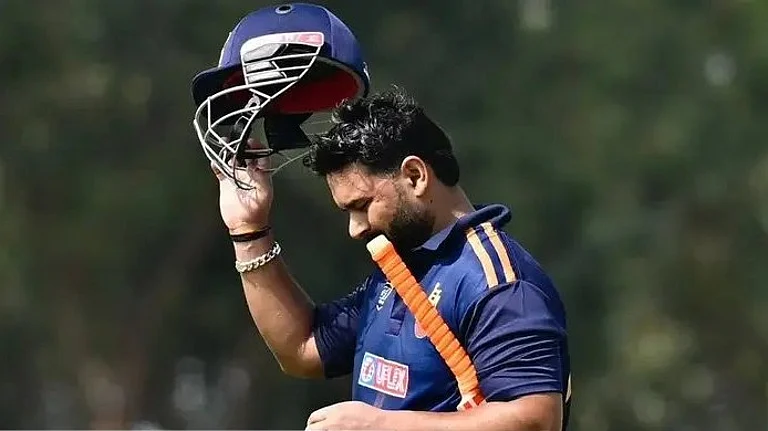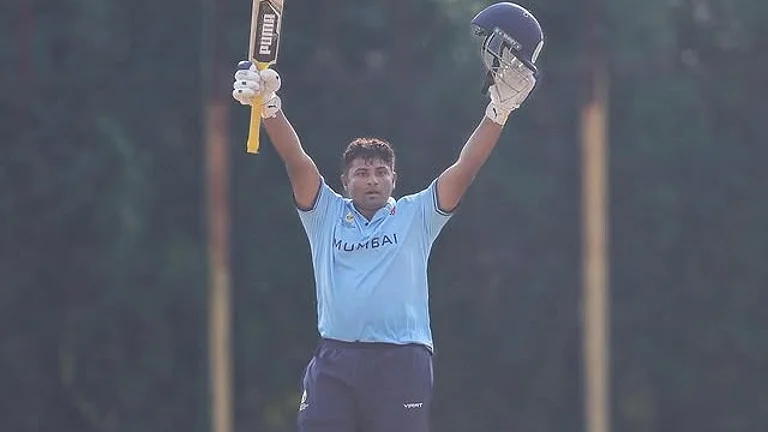In the latest Netflix thriller Thar, Satish Kaushik plays a lower caste cop named Bhure, who at one point, offhandedly mentions to his senior officer (Anil Kapoor) that “the uniform at least hides my jaati (caste).” A few scenes later, a family elder asks Kaushik for a cigarette. When he hesitates, the old man quips, “The cigarette has no caste.” Watching this exchange makes one wonder what if Thar was directed in Tamil by the likes of Pa. Ranjith, Mari Selvaraj, Leena Manimekalai or Vetrimaaran. One easy guess is—such a film would have been titled Bhure and Kaushik would have been its exalted hero instead.
In recent years, Tamil cinema has been touched and torched in equal measure by Dalit magic. All the directors listed above by way of wishful examples are Madras Talkies’ rebels, whose anarchic oeuvre deals with the disquieting intention of shaking your very soul and waking you up to the grim realities of Indian life involving caste and tribal politics. The oppression and stigma that people from the bottom rank of the society face has been depicted in the most brutal fashion possible in recent Tamil hits like Karnan, Asuran, Sarpatta Parambarai, Maadathy: An Unfairy Tale, Pariyerum Perumal, Jai Bhim and Irandam Ulagaporin Kadaisi Gundu.
Let’s start with Karnan (2021) and Asuran (2019). Both have Dhanush play a sort of raging bull roles that would make the angry young man of 1970s Bollywood shrivel. Part of Dhanush’s appeal has always been that of a likeable boy-next-door who has, like Rajinikanth, built a career playing the perennial underdog. But in Karnan and Asuran, he’s pushed down the class hierarchy—into the fringes of the ‘outcaste’, from where he kicks up one helluva savage storm. Inspired by the 1995 Kodiyankulam caste violence, Karnan is by far one of the angriest and most subversive films of our times. Like Bhure, the titular Karnan (Dhanush) could have easily opted for the uniform (in his case, the army) and found a better life for himself and his family. Instead, he decides to return home to save his village. The film chronicles police atrocities to show the powerful few not just as vicious but also inhuman. A mythical horse appears and Karnan gallops his way back into the village to seize the moment that belongs very much to him. Don’t be mistaken, the sword-brandishing warrior is no ordinary Karnan. He’s the Mahabharata’s tragic hero Karna who has been transplanted into the Dalit fold to uphold the idea of social justice.

In Asuran, Dhanush is Sivasaami, the avenging angel fighting the demons of feudalism. Neither the courts nor the police could help Sivasaami against all the exploitation and cruelty. One sequence unflinchingly highlights an upper-caste bully forcing a young woman to parade in the village with her slippers on her head just because she decides to cover her feet. Compared to Karnan’s incendiary climax, Asuran ends on a note that grudgingly acknowledges faith in the system. As Sivasaami walks into his court hearing, he tells his son that the landed gentry can take away their farms and money but they cannot snatch away their education.
The courtroom plays a far more important role in last year’s Jai Bhim, which outranked Hollywood classics Shawshank Redemption and The Godfather to become the highest-rated film on IMDb. Starring Suriya as the fiery advocate Chandru, Jai Bhim maps the struggles of an Irular tribal woman, seeking justice for her husband wrongly implicated by the police in a case of theft. Jai Bhim or ‘Long Live Bhim’ is the Dalit community’s battle cry, and by inserting this slogan in the title itself, the film wears its politics proudly on its sleeve.

The most striking aspect about the increasing presence of Dalit politics in Kollywood is the masterful ways in which the directors make use of symbols and metaphors to drive home their point as well as uplift the meaning of good and engaging cinema. Besides the obvious symbolism of having B.R. Ambedkar’s portraits or statues appear as a guiding light, other markers make it harder to misinterpret the message. Music has always been an inseparable part of the Tamil film-going culture, and needless to say, the soundtrack of these anti-caste movies doubles up as a mouthpiece. Slickly shot and genuinely pulsating, the carnivalesque songs are protest anthems.
Take the Pa. Ranjith blockbuster Kaala (2018) in which superstar Rajinikanth wears all-black outfits in contrast to his opponent (wily politician played by Nana Patekar) who is seen only in pristine whites. In the song, Katravai Patravai (Educate, Agitate), a child throws mud on Patekar, which is followed by an explosion of blackness on the screen. Its racy lyrics are an act of rebellion and revolt. Invoking the goddess Pidari, a ballad in Irandam Ulagaporin Kadaisi Gundu expresses hope for justice, especially in the line, “you can hear her thunder rumbling and the caste hierarchy crumbling”.
ALSO READ: Demigods Of South Indian Cinema
Dalit identity and its forbidden place in ‘civilised society’ are articulated in myriad ways, too. For instance, one repeated trope in a number of these critically-acclaimed films is their identification with so-called impure animals. There’s the recurrent imagery of an oppressed donkey in Karnan whose legs are tied. Dhanush finally frees him. The movie’s central theme comes from the village not having a bus stop, a potent symbol for progress and basic human rights. In Pariyerum Perumal’s most heart-wrenching moment, the protagonist (Kathir) is left to die on the railway tracks, exactly the same way his beloved dog Karuppi had been killed at the film’s beginning. The spirit of Karuppi then comes to rescue his master. The scene, in which director Mari Selvaraj maintains a delicate mix of lyricism and surrealism, is all the more haunting because Karuppi is bathed in Ambedkarite blue. Karuppi in Tamil means blackie. Sarpatta Parambarai, set in the black town of Madras, is the rare film from this fertile period where the focus is on the clan, not so much on caste. Yet, even here, the Ambedkarite blue returns in the rousing climax when the boxer protagonist Kabilan (Arya) is given a blue robe to go with his gloriously blue gloves.

Leena Manimekalai’s Maadathy: An Unfairy Tale is about a young girl Yosanna (Ajmina Kassim) from the Puthirai Vannars tribe. They are not just untouchables, they are the ‘unsee-ables’. The family washes the village’s dirty clothes, be it a funeral shroud or bloodied menstrual cloth. The tribe serves the river but they are not allowed to cross it. Yosanna likes to slip away into the forest, and live blissfully like a butterfly, but every time she’s on screen there’s a sense of ominous foreboding. One of the most devastating scenes from the film is when Yosanna’s mother is raped by her upper caste tormentor. Helpless and humiliated, she goes to the riverfront and vents out her anger on the day’s laundry. A fate worse than her mother’s is visited upon Yosanna. When all earthly recourse fails, nature takes hold of the narrative. There’s a sudden downpour and Yosanna is turned into a goddess.
It would have been easy to dismiss this spate of anti-caste films as mere pamphlets if only they were not so well-made. A key reason why there’s an authentic touch to these narratives is because many of the leading lights of the Dalit movement, including Pa. Ranjith and Mari Selvaraj, have taken it upon themselves to serve us a slice of their lives that was deliberately kept hidden in plain sight. In Tamil Nadu, celluloid has long been used as a tool for politics since the advent of the Dravidian movement (two films that can help you understand this phenomenon better: Krishnan-Panju’s iconic Parasakthi and Mani Ratnam’s Iruvar). Going by that history, it’s not too surprising to see the Dalit-led narrative coming to the fore and speaking up finally.
(This appeared in the print edition as "‘Dalithood’ in Kollywood")
(Views expressed are personal)
Shaikh Ayaz is a Mumbai-based writer and journalist























